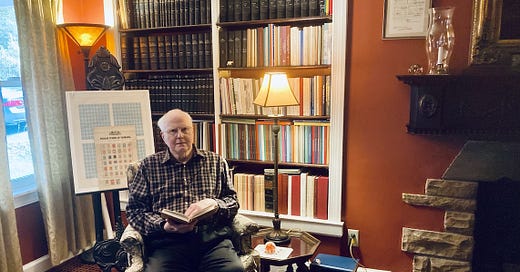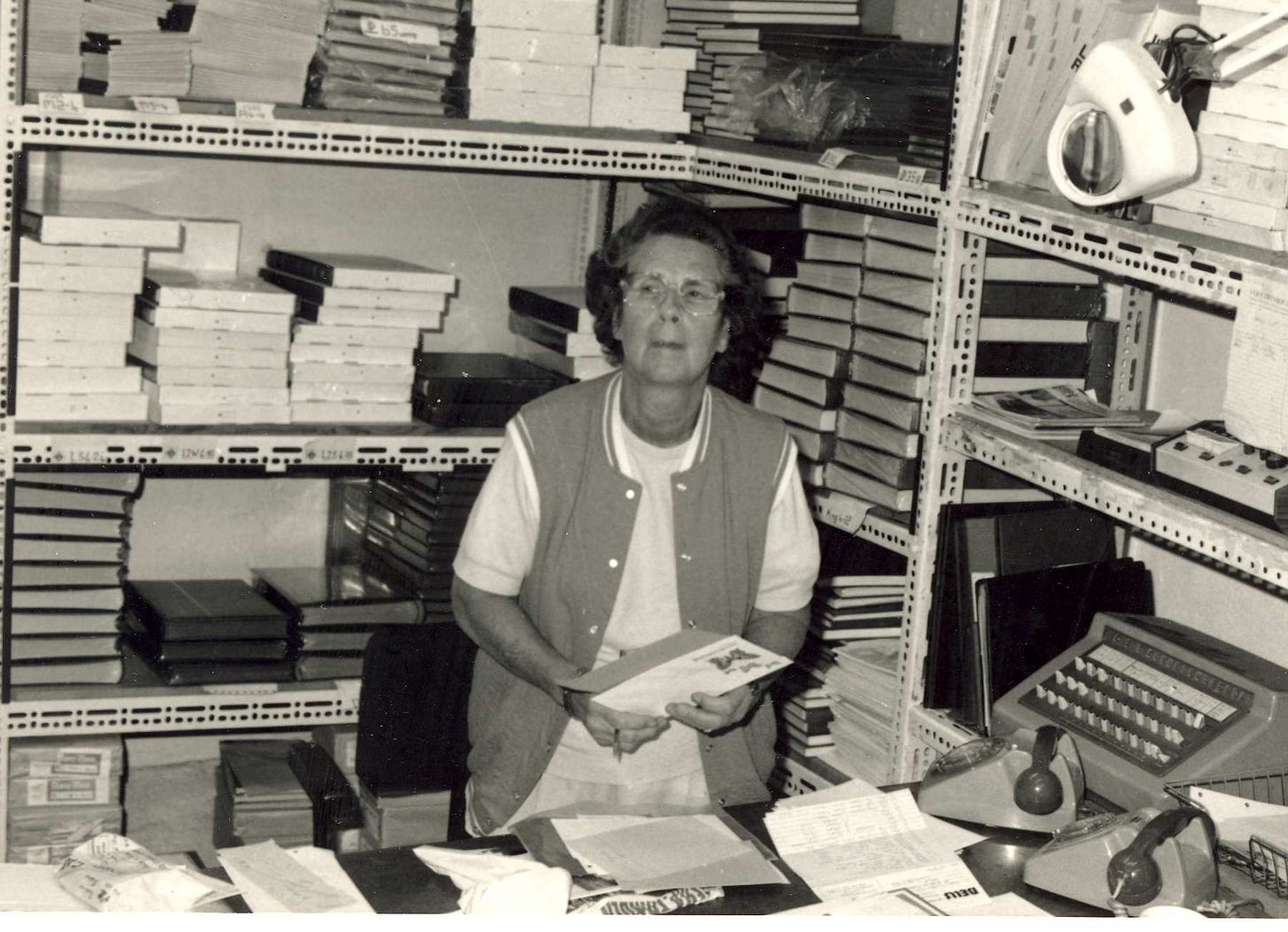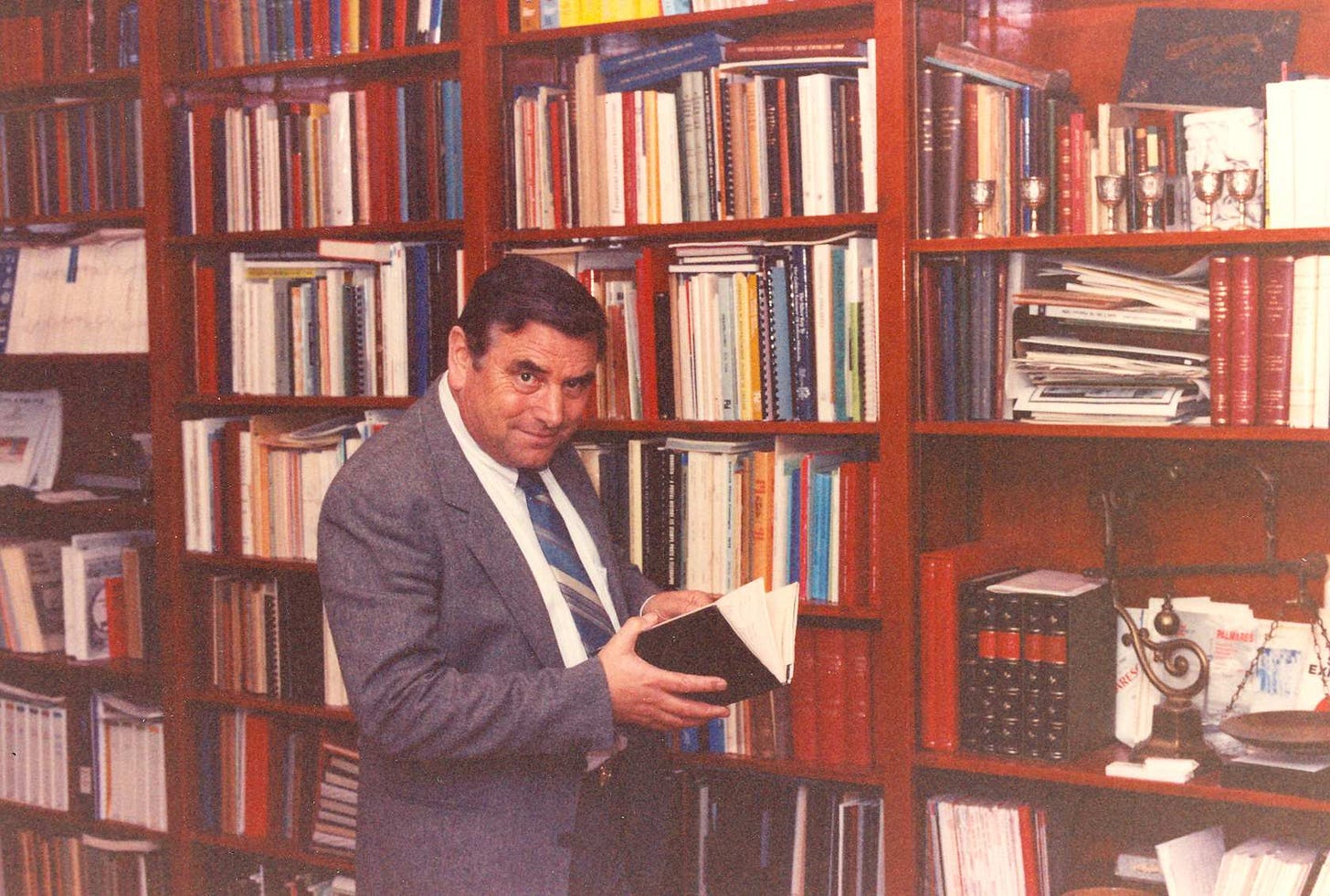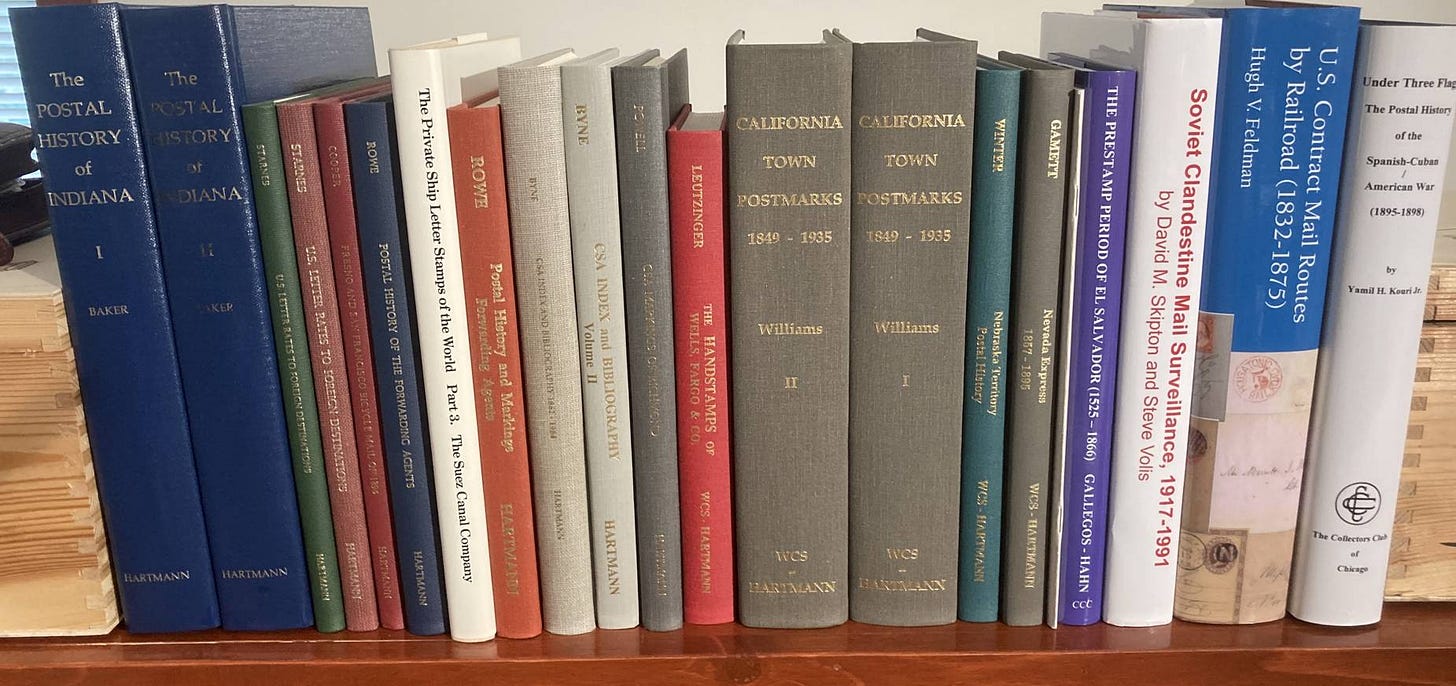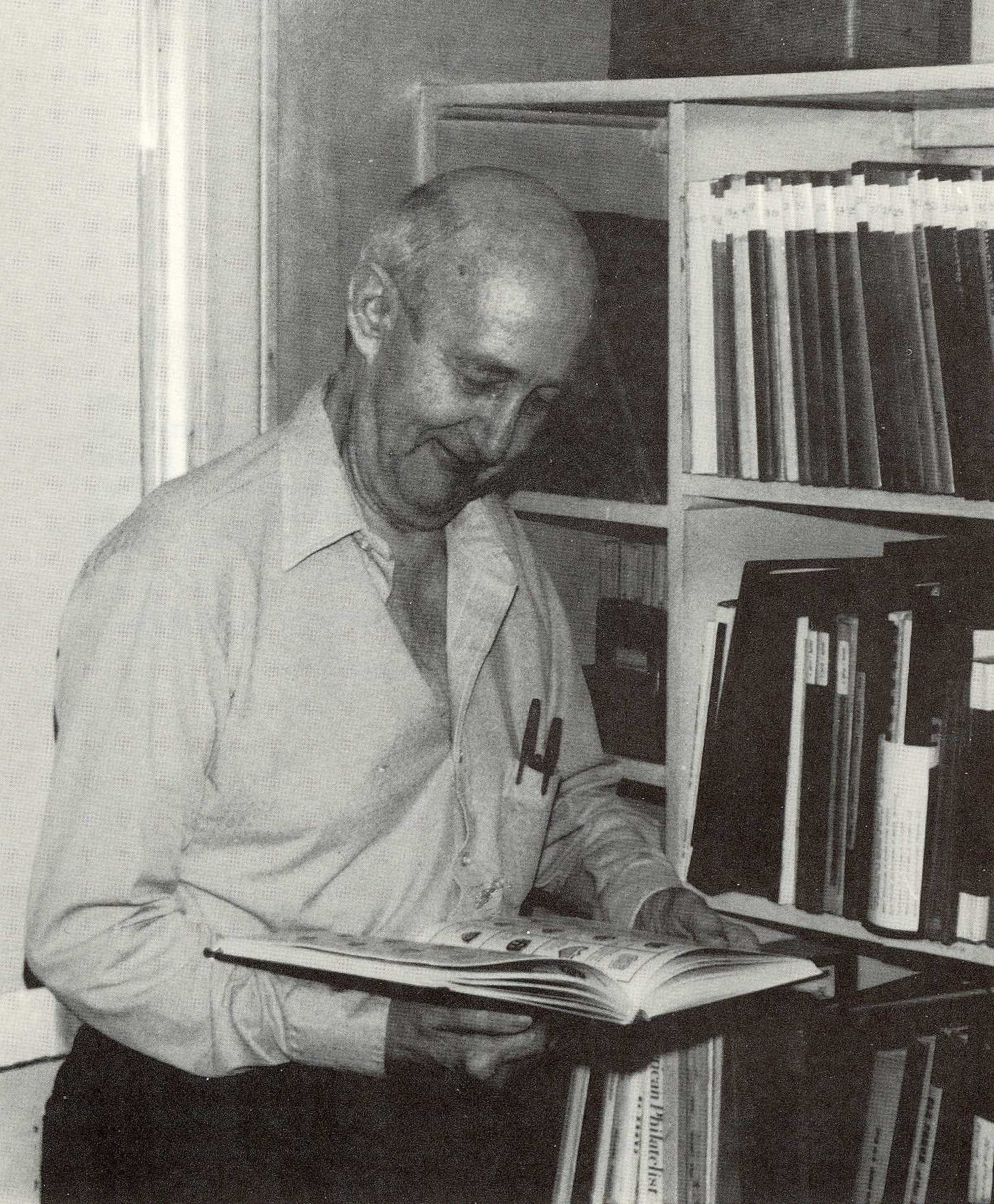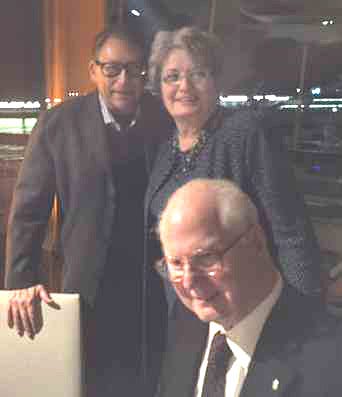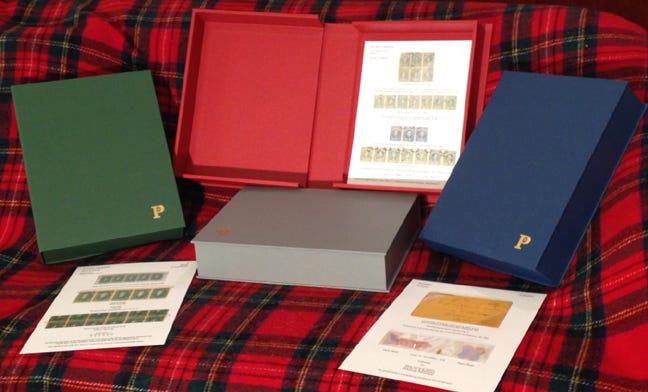The Bookseller of Louisville: An Interview with Leonard H. Hartmann, Philatelic Bibliopole
America's most popular philatelic literature dealer
This article was first published as “The Bookseller of Louisville: An Interview with Leonard H. Hartmann, Philatelic Bibliopole” Philatelic Literature Review 69 no. 4 (Fourth Quarter 2020).
It has been edited and revised for publication online with many external links as well as links to my articles and new images.
Leonard H. Hartmann (Figure 1) needs little introduction as he is a most notable figure in philately, especially that of the United States. His achievements are many and one can only highlight some of them. Foremost, Hartmann has been dealing in literature since 1965! Over the last 55 years, he has been not just a dealer but also a big promoter of books through his newsletters and advertisements including in the pages of this journal and many others. As also through his publications of quality philatelic books since more than four decades. Further, he is a collector and expert in the stamps of the Confederate States of America and is also keen on forgeries and some other U.S. subjects; he has exhibited them selectively at important shows. In recognition of his contribution to U.S. philately, Hartmann received the U.S. Philatelic Classics Society’s Distinguished Philatelist Award in 2007. Finally, he has been a prolific philatelic writer and in 2018 was inducted in the APS Writers Unit #30 Hall of Fame.
Hartmann has been interviewed in The Philatelic Literature Review before1 but those were aeons ago. This interview attempts to complement his earlier interviews and supplement them with Hartmann’s immense store of philatelic memories and stories.
Leonard, tell me about yourself
I was born in Chicago, Illinois on 22 November 1941 where I attended grade school. In 1955 my parents moved to Louisville, Kentucky where I attended high school and have been ever since. My college was the University of Louisville’s Speed Scientific School and I graduated in 1965 with a BS in Chemical Engineering.
Before becoming a philatelic literature dealer, what did you do?
I worked for the same catalysts company for 45 years in Louisville. The company went through various name changes from Girdler Chemical to Süd-Chemie of Germany, and finally Clariant, a Swiss company. My specialty was always related to catalysis – designing and building Hydrogen Reduction Furnaces, rotary calciners for heat treating powders, etc. During my employment, I traveled extensively to Europe and twice to China. While in Europe, I was able to take philatelic side trips paying only the nominal added costs.
How did you get into philately?
While in grade school I helped an old Mining Engineer, Norman Poole, a little. He and another childhood friend were serious stamp collectors. Norman wanted me to become a mining engineer; while engineering fit me more than mining, my interest in stamp collecting was born.
Around 1958, when I was in high school, Norman died and his family permitted me to buy a few items. I could not afford much but I still have one which it is in my CSA Lithograph exhibit – a strip of four of the 5c green that looks like Stone 1 printing, confirmed by Larry Shenfield2 at the time, but is actually Stone 2. It took me over 30 years to figure out what should have been immediately evident; I guess such is what keeps things interesting.
You got into philatelic literature dealing in 1965, right?
Yes, I started in about 1965 but in a small way. I was already employed and further I had little money to invest in books at that time.
When you got into philatelic literature, there must have been more dealers of it around than exist now. Who were your biggest competitors in the U.S. and in other part of the world?
Believe it or not, in literature I had and still have few competitors! Vera Trinder (Vera Webster) (Figure 2) was a good friend. We worked closely together for over 20 years. There is Vaccari in Italy and Burkhard Schneider in Germany. In the U.S. there is APS and APRL, who sell both new and used books, and Phil Bansner. Jim Lee has been trying to get out of literature but he keeps finding a few things.
When you got into business, Sylvester Colby was doing some major literature sales in the U.S. For example, the library of the Kayes,3 Philip H. Ward, John N. Luff, Frank Rossi, and many others.
You have also written an article on the man in 2018.4 Tell us some of your personal reminisces of him.
Sy was selling most of what George Turner5 (Figure 3) did not want. Sy was always a good friend but some years ago Bill Boggs of the old New England Stamp Company twisted my arm to join the ASDA. I really did not want to but put in an application. I was turned down; I later heard that Sy Colby blackballed me as he was under the impression that I had reprinted Simpson’s U.S. Postal Markings and Related Mail Services 1851-1861, which he thought to be unethical; but ultimately realized I did not. I still do not know the source of this reprint. It is rare but few, if any, want it. Before and after this incident Sy had always been extremely cordial and would send complimentary bound copies of his auction catalogs.
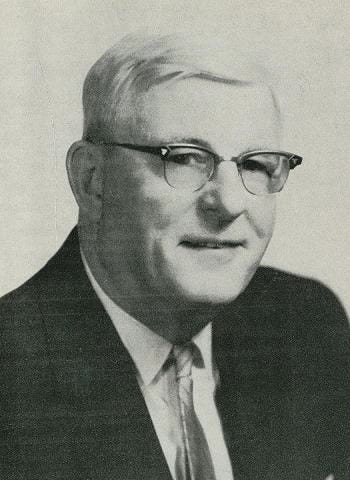
Further, you must have known Louis Robbins well. He did a few well-regarded literature sales in the 1970s and 80s. Tell us something about him.
One cannot talk about Lou Robbins6 (Figure 4) in a few words. He is an icon in philatelic literature. But he is best known as an ethical and knowledgeable auction agent, completely honest in all respects. I once gave him a bid on an early Chicago item and he advised me that he thought the date was changed. He did not bid and I later proved the sender was not in or near Chicago on that date by about 10 years. He was known to interrupt auctions when a relative of the consignor was bidding i.e., to bid up the price. I have so many fond memories of him. In particular I remember a Bruce Ball auction in the 1970’s. Lou could not attend in person but sent his wife Estelle to represent some clients; she was extremely nervous. We had dinner that night and that calmed her down.
Tell us more about the “Library of a Western Gentleman.” You purchased it sometime in late 1978, right? And even issued a catalog. What were the highlights of that library?
In 1978 I made my first major purchase – the Murl Kimmel7 library. I marketed it as the “Library of a Western Gentleman” (Figure 5) as the family did not want the name out. My wife and I flew to Robertson, Kansas where a rented station wagon was waiting for us on the tarmac. I purchased the library and loaded the rarities into the station wagon to drive back to Louisville; the remainder loaded an over the road truck. A year later I received a call from the family saying they found more in an out building and wanted to know if I wanted it. Of course, I did and a few weeks later another over the load truck, half-loaded with literature, arrived. To help pay for the purchase I ended up borrowing $25,000 that I was able to pay back in about six months. I had to sell some books that I did not want to part with such as T. E. Lawrence’s 1918 Stamps of the Hejaz and a mint set of The Stamp Collectors' Magazine; I have not been able to replace them. Kimmel wanted the finest copy and kept buying until he thought he had it; the library had three complete sets of the Ferrari auction catalogs, I still have Kronenberg’s8 set in my personal library.
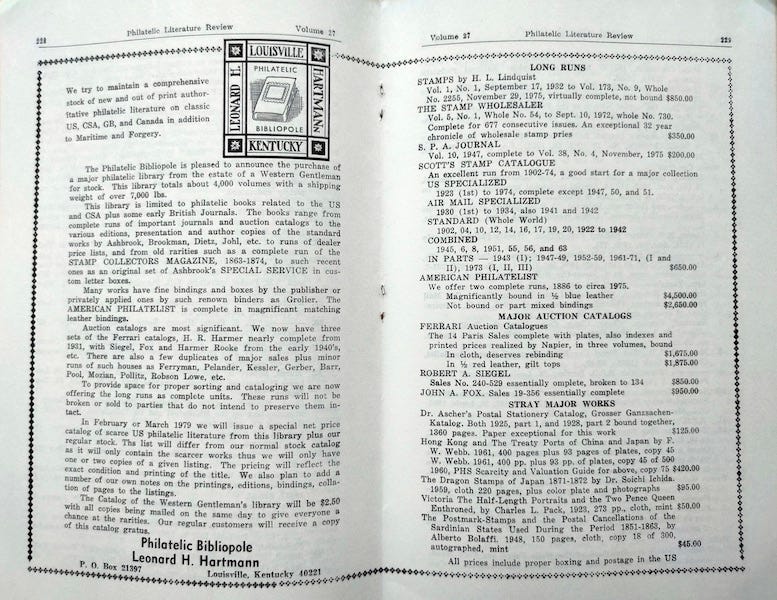
At the turn of the 1980s, we have one of the grandest literature sales in the world ever. That of the George T. Turner library. You once told me you did not bid for the library. Why?
A year after the Kimmel purchase, I was invited to bid on the George Turner library. I put in a low bid as I could not really afford the price at the time. The library went to Roger Koerber.9 At the Turner auction, I bought a number of items for myself and as an agent. The prices realized of the Turner auction sale has an image that shows my back. I had two high bids for the ‘Fournier Album’ but I did not execute either. About one-third of the pages were missing; it was not George’s copy as the Smithsonian had first pick and took much and Koerber had to scrounge up material to fill out the same. Incidentally, at present, I have three copies of the Fournier Album in stock in addition to my personal one.
At the sale a client asked me to give my opinion on an interesting early American document that I subsequently bought for him at under $1,000, a quite high price based on the estimate. In 2018, I gave a program at the Collectors Club of New York. A gentleman, who I had never met in person, introduced himself and asked if I remembered this document; he said that out of curiosity he had it appraised and it was valued at $75,000!
In later years till date, did you make any such similar big purchases? Give us more details.
In the early days my PO Box was at the main Louisville airport that was quite close to my office and on route to home. One day I was flying to Buffalo, NY on company business and checked the PO Box. There was a letter from Pitt Petri’s son on his father’s library. Petri was an upper New York postal history student and collector. I bought the library the next day.
Over the years I have purchased entire libraries and/or specific items from a number of the U.S. Classics collectors. I remember that I bought two original sets of Ashbrook's Special Service10 from Creighton Hart.11 Then there are others many others such as George Hargest12, Clifford Friend, Dick Graham,13 etc.
Many of my customers do not want their interests known; some have especially requested that I do not identify them. Jack Molesworth,14 (Figure 6) a noted Boston dealer and friend for over 40 years, had several personal collections. He once told me he did not want this known as he felt it would hurt his reputation as a dealer since people might think of him as a competitor for the best items.

Would you relate to us some interesting anecdotes from your literature life?
Dan Vooys,15 the founder of the Philatelic Literature Association, was an old friend. I attended the second ever meeting of the PLA in the late 1960’s; the first from the 1940’s. Daniel was a banker and I looked to Daniel for a mortgage in mid-1965. While I had found a house I liked, it was built in the 1790s, and a reasonable mortgage was not possible in Kentucky because of its age. Dan said the age was no problem in his area but they could not help as they could not lend across state lines.
Another recollection. I was never an official distributor for Robson Lowe; HJMR Company was. But I stocked his entire book line from the early 1970’s until the end and after. Once when Silvia and Arthur Lockyner were visiting (she ran the Lowe literature sales) she said she was once asked, “why does Hartmann get a better discount than HJMR?” and her reply was, “Hartmann has always gotten that discount”. The reply was accepted; such were the old ways of dealing! I never really did know Robson Lowe personally though we met and corresponded a bit.
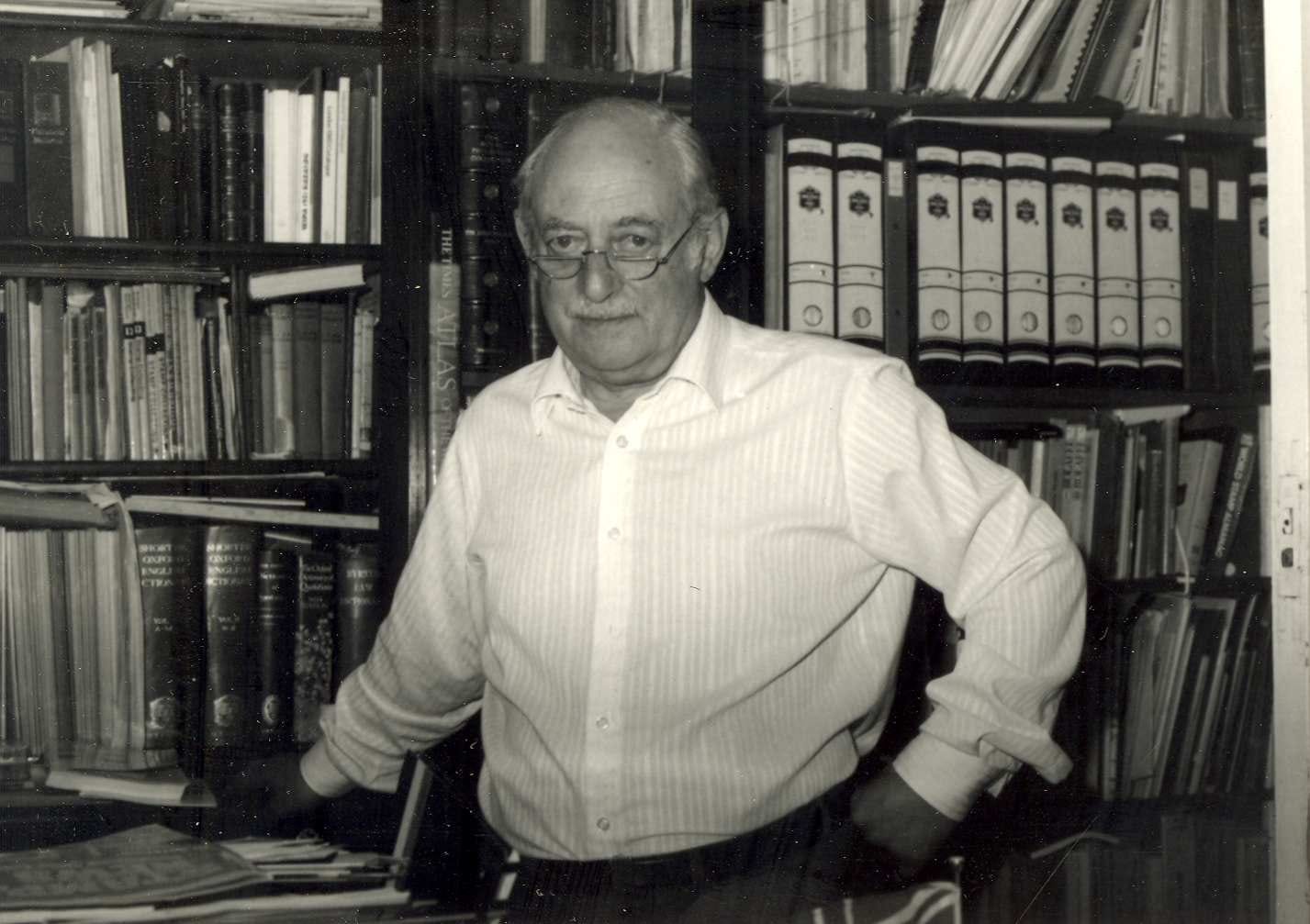
There are so many people connected with literature who I have met over the years (Figures 7 and 8). Offhand I can recollect Paolo Vollmeier in Switzerland, William Binner, Wolfgang Maassen, and Peter Feuser in Germany, and Patrick Maselis and Vincent Schouberechts in Belgium. In the UK, Harry Hayes, Stephen Holder, Mervin Todd, Phil Cockrill, Robert Johnson, the Jackson cousins, and many more. David Beech was and still is a major contributor to literature as is Brian Birch. I much appreciate their promoting literature by doing serious research.
One regret I have is that while I was acquainted with Siggy Ringström, published Part 3 of his Private Ship Letter series on Suez, and was involved with his other publications, I never managed to meet him or his wife Goldie in person. I often traveled to Europe on company business but sometimes health and sometimes other preoccupations came in the way. Through Siggy, I became friends with Henry Tester who co-authored the Suez book.
In the late 1970s and 80s, Quarterman Publications reprinted a number of books from all over the world.16 Some felt it devalued the originals that they possessed while others were happy with the high-quality reprints of works, they could not actually afford. What was your personal take on it?
I had no problems with them; there was no legal or moral or sales conflict that I saw. I stocked the Quarterman books and always had good relations with Al Hoch,17 the owner and founder. I bought new reprints in quantity and after his death much of the remainders from his son. We were not competing; his reprints were of scarce books that were in good demand while my interest was in the originals and more esoteric items. For his 1975 reprint of the Carroll Chase The 3¢ Stamp of the United States 1851-1857 Issue, I supplied the information for the Publisher’s Note and was so credited. Once Al asked me how many copies of one of his books that I had in stock. Unknown to me he was going to cut the price. To my surprise he sent me a check for the difference in what I paid and the new price. I do not know of any other publisher who did the same.
Looking back, would you say Literature Collecting went through its heydays and perhaps a bubble in the late 1970s and early 1980s?
There are still major collectors of philatelic literature but perhaps less than in the 1980’s with many being abroad. Actually, on second thoughts, I am not sure there are less today! However, I do think the internet has hurt literature publishing and sales and stamp collecting in general. While today it is easy to find an answer to a specific problem on the web, I think this only gives a narrow view of the subject with little appreciation of the background.
The 1990s saw literature dealers go on the internet. You were probably one of the first, if not the first. How did the ‘Eureka’ moment come about?
I published 26 catalogs, one each year from 1976, and a few specials ones. The last one, Number 26, was from December 2002. The last cost me almost $5,000 to print and postage was always increasing. It was evident that the business could not continue in this form and hence I went to the web at little cost. I also started sending out newsletters by email instead of by post. Our first e-mail newsletter was dated March 5, 1988 and our most recent Number 358 will go out in October 2020.
How did you develop the site? How do you maintain it now?
The website was originally based on my last printed catalog i.e., the 26th. I write all of the code and update it as things evolve. I use basic HTML programming for two reasons - first it is simple and I can do it myself and second it can probably be read with any browser worldwide.
How did you get into publications? Along with Harry Hayes you were one of the few literature dealers also publishing.
Before publishing books,18 I edited, printed, and mailed the Confederate Philatelist for the Confederate Stamp Alliance from 1967 through 1970. Hence, I guess publishing was in my blood. Further, I always liked rare stamps but I visualized my income would never permit their purchase or dealing in them beyond as an agent. Philatelic Literature was different; even rarities sold for a small fraction of comparable stamps and I decided to emphasize the literature.
On our books (Figure 9), I always tried to be innovative and to promote them well. We always were generous with review copies and entered them in a few literature competitions, usually the APS Stamp Shows and an appropriate International; in all cases we have done well. At Israphil 1985 our Ken Rowe book, The Postal History of the Forwarding Agents, received a Gold. I think this is the first international gold for literature. The Indiana book contained microfiche for the 20th century material and for the Forwarding Agents and the California Postal Markings a search file was made available on the internet, another first. They are still online on my site and quite useful.
Your first publication in 1976 was the massive two-volume The Postal History of Indiana by J. David Baker. Tell us more about it.
Dave and his brother Hugh were old friends and the Indiana book (Figure 10) was a major new work. Besides Indiana it had much postal history applicable to all areas of the U.S. Since I did not have much computer ability then, the book was worked through the computer department of the Baker Company in Indianapolis. When finished the department was overjoyed in being able to destroy the many thousands of punched cards that held all the text and many images. To save on cost we decided not to print the 20th century dates but it is included with each book on microfiche. I think this is the first philatelic book to have microfiche.19
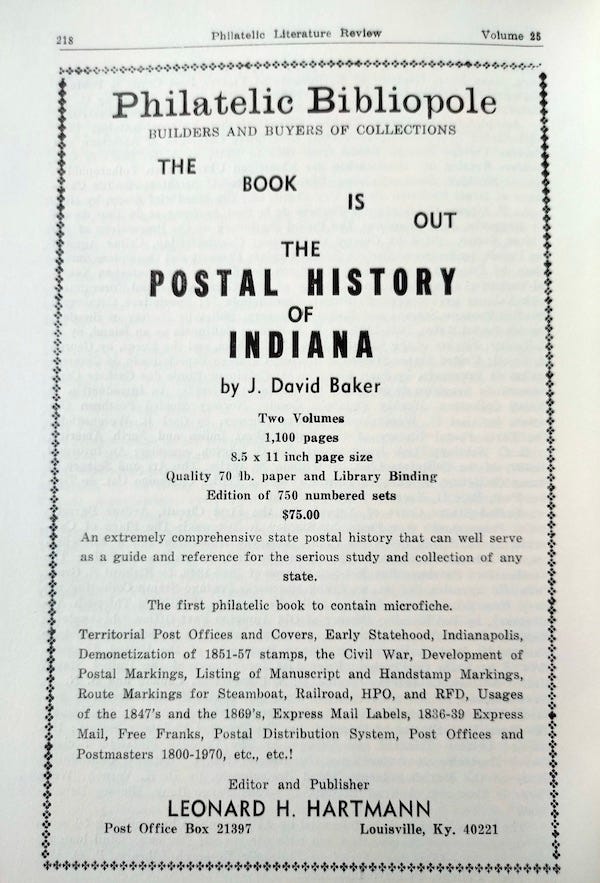
One of your publications that I use is United States Letter Rates to Foreign Destinations, 1847 to GPU-UPU by Charles J. Starnes. I think it is still unsurpassed in the subject it covers. What are your memories publishing that book?
Starnes (Figure 11) had a reputation of being a hard man to deal with. Many wanted to publish his work but he always refused. One reason I got the rights was that Charley had only me to deal with and not a committee, etc. We would always ultimately come to some agreement. For the first edition, for instance, he insisted despite much objections that he wanted it as he had written. He refused the addition of illustrations of covers. After it appeared, he said, “you were right”. The reverse of each page is not printed and he realized that there was much blank space. For the second edition with the many changes, he permitted illustrations but was still restrictive and only wanted minimum description. I think the only cover illustrated that he did not own was my Chicago to Egypt. He was pleased with both editions. I think it is still the first book to go to in trying to figure out an U.S. outgoing cover.
Of a number of books that you published you also came out with deluxe editions of them printed on rag paper and part leather bound. Why? How were their sales?
I tried to introduce the old concept of a real De Luxe edition and not just some fancy binding. The books were on special paper with an added leaf and a fine binding by Adolphus, John Jenkin’s house bindery in Texas. Alan Grace, a fine British binder then working in Louisville, did the binding on our deluxe Suez book as Adolphus was no longer in business. My retail was $300 each that essentially covered my cost. Only one title sold out and I decided I could not continue to subsidize them.
Your last publication was in 2003. Why did you stop publishing thereafter?
Well, there were changes in my personal life. By 2003 I had retired from catalysts but was still consulting. And after 10 years of being alone, I married Sarah (Figure 12) in 2004. My first wife had refused to travel even when business suggested it and at no cost to us. Sarah quickly became accustomed to Europe and our philatelic friends. Until the pandemic we were making up to three trips to Europe each year and hope to go at least once next year. Sarah does not collect stamps but does read much work for me and tolerates books being in every room of the house except for the bathrooms. This includes the garage, wine cellar, and sauna; it prevents us from using the sauna and I must clean it out!
Prior to 2003, I published for the Western Cover Society and since 2014 for the Collectors Club of Chicago (Figure 13). Till recently I used to chair the Collectors Club of Chicago’s publications committee. I have also worked with a number of authors and helped in books published by others. On my own titles I had promised myself that I would never reprint a book unless there were major changes; both the Starnes and Rowe books’ revised editions had major new material.
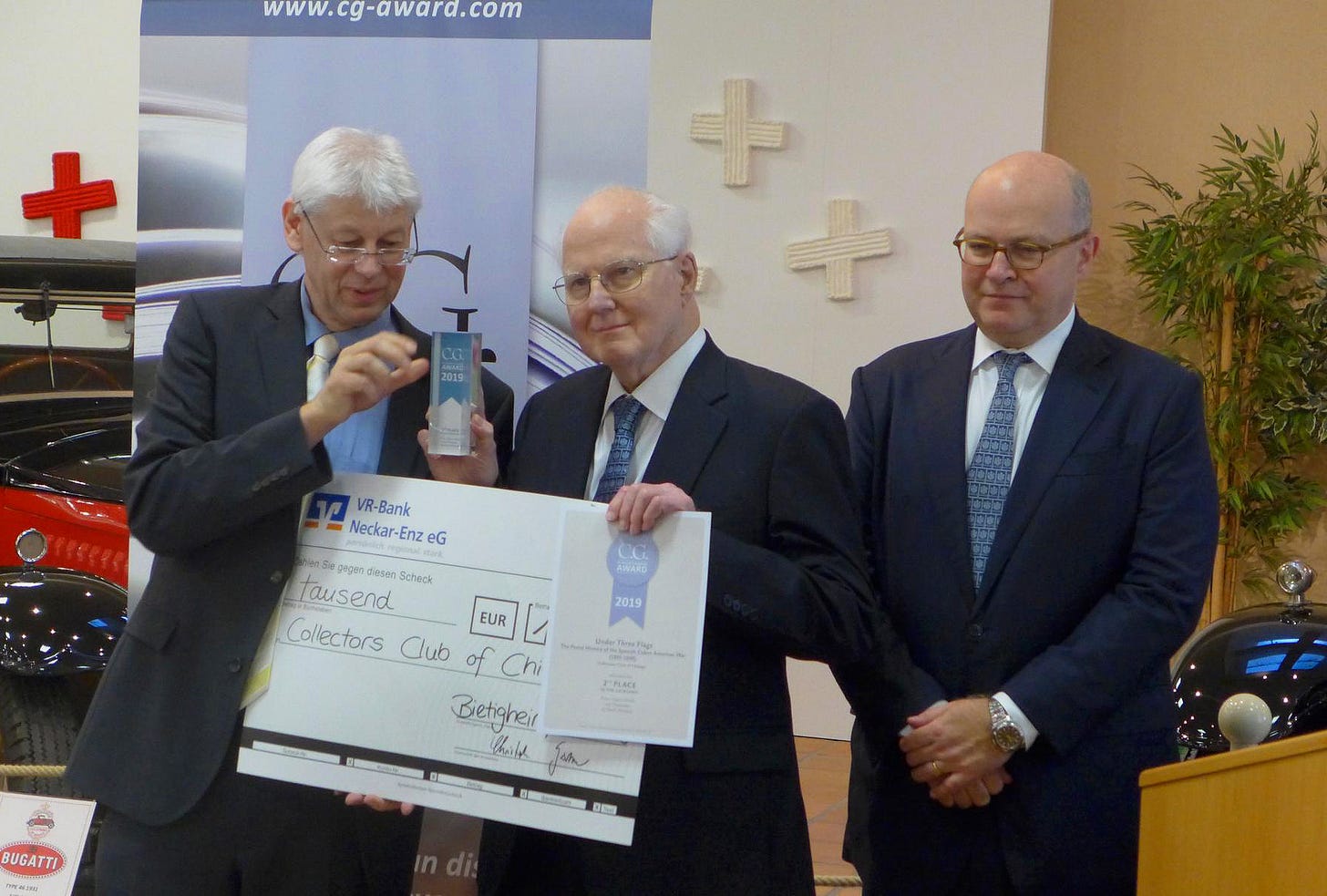
You also own or are exclusive distributor to some literature titles? How does that work?
This is complex but essentially it depends on the title. For example, I had exclusive distribution for L. F. Gillam’s 1967 Canadian railroads book, A History of Canadian RPOs, having paid for the printing. Sometimes I got exclusive rights since I was the only dealer that bought in quantity (for example, I bought 300 of the 500 copies of Gillam’s book).
On some current titles, I cannot say I have an exclusive U.S. distribution but as far as I know no one else in the country stocks them; for instance, the yearly issuances of the Club de Monte-Carlo or the yearly volumes of the journal Fakes Forgeries Experts, etc.
You also deal in stamp products. Tell us about them.
I was seeing a real need for quality philatelic supplies for mounting for exhibits and archival preservation. Since I was anyway involved with printing and binding, I started stamp supplies in 1987. This being archival 100% cotton mounting pages, page protector sleeves, and clam shell boxes (Figure 14) to house them. We used to offer Ye Old two-inch cover corners but unfortunately the last two people to make them are now deceased.
What is your opinion on philatelic publications from the last 10-15 years as compared to those earlier? Both in terms of content and production quality.
The recent philatelic publications are mostly excellent. From an information perspective, they benefit from the use of information from earlier as well as current research. From a production perspective, most of them are in full color and hence attractive. The use of color in the past was prohibitive but now there is little difference in cost.
Printing costs are constantly increasing and for the small serious philatelic market it is a real problem. Today an edition of only 300 copies is common whereas in the past I have published up to 1,200 copies of a serious book. Today a serious book often requires subsidies as the sales do not cover the printing and distribution costs; the subsidy needs to come from the author, society, foundation, or trust. This is unfortunate for serious philately.
Apart from philatelic literature, the world knows you as a collector of forgeries as well as Confederate States of America. Tell us more about your collecting interests.
I have collected CSA lithographs and typographed stamps since the late 1950s.20 My interest lies is in the stamp production and not in the military or patriotic aspects. However, I do not exhibit often. I showed the lithographs at New York 2016 and won a Gold. I had planned to show the CSA typographs at London 2020 but due to its postponement will probably do so in 2022. I want to show the typographs in London as it has a major relation to England (i.e., De La Rue and the blockade). I also want to show the lithographs again and probably my early Kentucky and Chicago but it must be an appropriate show.
Apart from CSA, I am interested in forgeries as well. I am helping friends on works of Spiro, Peter Winter, and Petri. I showed the Winter forgeries at the 2018 APS show in Columbus.
Finally, my 1894 Fresno to San Francisco Bicycle Mail exhibit is posted on Richard Frajola and Collectors Club of Chicago’s web sites21. I would like to post some of my other collections as well but they keep evolving. And once something gets posted on the net, it is picked up by people and it is not realistic to expect them to search and update the earlier download.

I am not a mug hound but a good award (Figure 15) is always appreciated. Perhaps my greatest reward has been to see a person sitting in a chair studying my exhibit!
You wrote a part of the forgeries section of the 2013 book Milestones of the Philatelic Literature of the 19th Century. Tell us more about your writings.
I did the chapter on Raoul Charles de Thuin22 in Milestones and showed an exhibit of his work at the 2013 Monte Carlo show. I knew Raoul; I was one of his customers and have the manuscript of his unpublished “novel”. I also wrote the 50-page section on the General Issues in the Confederate States of America: Catalog and Handbook of Stamps and Postal History (2012).
I have written articles for the Chronicle of the U.S. Classic Postal Issues, Confederate Philatelist, and Philatelic Literature Review, among others. In 2018, I was inducted in the APS Writers Unit #30 Hall of Fame.23
You mentioned in one of your recent newsletters from January 2020 that you are 78 but are not thinking of retirement? What are your thoughts? Is the lure of philatelic literature still strong?
I plan to collect books and stamps and to support philatelic literature as long as I am able. Recently, I purchased for my library a beautiful copy of the English edition of an 1864 Moens catalog that I think is a deluxe; I have never seen one so described. However, I am cutting back on stocking books, buying fewer copies of new books and being more selective in buying libraries.
I stepped down as Chair of Publications of the Collectors Club of Chicago to make room for new thoughts in this direction. As also to have more time for my other projects. I have been working on a number of forgery studies and I expect they will be published in the next several years. In 2021, I plan to publish a completely new edition of the 1983 The Fresno and San Francisco Bicycle Post of 1894 as much new information has recently become available.
Appendix
Books Published by Leonard Hartmann
The Postal History of Indiana by J. David Baker (1976). Two volumes. Edition of 750 ordinary with microfiche, a small number (about 10 to 20) of semi-deluxe in red binding for the author’s friends, and two deluxe.
United States Letter Rates to Foreign Destinations, 1847 to GPU-UPU by Charles J. Starnes. First Edition (1982) of 1,000 ordinary and 25 deluxe. Second Edition (1990) of 750 (1,000 made but 250 were destroyed due to a printing error)
Fresno and San Francisco Bicycle Post of 1894 by Lowell B. Cooper (1983). Edition of 500 ordinary and 29 deluxe, of which 25 were for sale.
The Postal Markings and Postal History of The Forwarding Agents by Ken Rowe. Second Edition (1984) of 1,250 ordinary and 28 deluxe of which 25 were for sale. Third Edition (1996) of 1,000.
The Private Ship Letter Stamps of the World. Part 3, The Suez Canal Company by Jean Boulad d'Humières, S. Ringström, and H. E. Tester (1985). Edition of 1,250 ordinary and a few deluxe.
Confederate States of America, Philatelic Subject Index and Bibliography, 1862-1999 by Richard H. Byne. Vol. I (1986) and Vol. II (2001). Edition of 500 each.
Confederate States of America, Markings and Postal History of Richmond, Virginia by Peter W. W. Powell (1987). Edition of 750.
The Handstamps of Wells, Fargo & Co., 1852 to 1895 by John F. Leutzinger (1993). Edition of 750.
California Town Postmarks 1849-1935 by John H. Williams (1997). Two Volumes. Edition of 450 each.
Nebraska Territory Postal History by Charles W. Winter (1999). Edition of 450.
Nevada Express, Wells, Fargo & Co, and Other Letter Expresses, 1857-1895 by James M. Gamett (2002). Edition of 450.
The Post Office Mail Sent Across the Lines at the Start of the American Civil War, May to July 1861 by Steven C. Walske (2003). Edition of 2,250.
Note: Nos. 8 to 11 were published for the Western Cover Society.
Books Published by Hartmann for the Collectors Club of Chicago
The Prestamp Period of El Salvador (1525 - 1866) by Guillermo F. Gallegos and Joseph D. Hahn (2015). Edition of 300.
Soviet Clandestine Mail Surveillance, 1917-1991 by David M. Skipton and Steve Volis (2016). Edition of 300.
U.S. Railroad Contract Mail Routes (1832-1875) by Hugh V. Feldman (2018). Edition of 680.
Under Three Flags, The Postal History of the Spanish-Cuban American War (1895-1898) by Yamil H. Kouri Jr. (2019). Edition of 500.
See Hagan, William. “The Philatelic Bibliopole: An Interview with Leonard Hartman.” Philatelic Literature Review 26 no. 2 (Second Quarter 1977): 107-110; Hagan, William. “On a Major Literature Acquisition.” Philatelic Literature Review 27 no. 4 (Fourth Quarter 1978): 238-240 (on the purchase of the Kimmel library); and Hagan, William “The PLR Dealer Survey.” Philatelic Literature Review 35 no. 3 (Third Quarter 1986): 68-69.
Lawrence L. Shenfield (1891-1974) was an expert in the philately of the Confederate States. See https://en.wikipedia.org/wiki/Lawrence_L._Shenfield (accessed 13 October 2020).
“Kayes” stands for “Ks” – this sale contained the material of a few collectors whose names started with a K. Including: William C. Kennett, Ralph A. Kimble, William R. King, Roland King-Farlow, and Harry M. Konwiser.
Hartmann, Leonard H. “Busy, Appreciated and Well-Liked: Auctioneer Sylvester ‘Sy’ Colby Sold Significant Literature, and Stamps, Too.” Philatelic Literature Review 67 no. 1 (First Quarter 2018): 34-40.
George Townsend Turner, Jr. (1906-1979) was a multifaceted philatelic personality. One of philatelic literature’s greats, he was an expert in U.S. Internal Revenue stamps, very active in organized philately, curator of the National Stamp Collection, Smithsonian Institution 1958-62, and so on. At the time of his death, his library was the largest in private hands and had the most comprehensive collection of U.S. philatelic publications. The interested reader is recommended the following two articles: (1) Trenchard, Herbert A. “The George T. Turner Philatelic Library.” Philatelic Literature Review 30 no. 3 (Third Quarter 1981): 180-188 and (2) Hagan William. “The Turner Sale.” Philatelic Literature Review, Philatelic Literature Price Trends 30 no. 2 (Second Quarter 1981): 99-102.
Louis K. Robbins (1919-2010) conducted his first philatelic literature sale in 1975 and his 10th and last in 1986. On his retirement his literature stock was purchased by James Lee. As an auction agent he counted the great John Boker as one of his clients. Robbins was inducted in the APS Hall of Fame in 2010. The APS website (https://classic.stamps.org/HOF-2010), American Stamp Dealers Association website (www.americanstampdealer.com/Hall_of_Fame.aspx), and Apfelbaum’s website (www.apfelbauminc.com/blog/post/louis-robbins) have more details about Robbins’ philatelic contributions. (accessed 4 October 2020).
A. Murl Kimmel (1899-1976) was a major collector of Confederate States, early U.S., and various foreign countries.
Albert A. Kronenberg (1892-1971) was a Swiss bibliophile. He is best known for his Catalogue of a Private Collection of Books on Philately and Postal History which listed books in his private library. His set of Ferrari auction catalogs was acquired by Kimmel and later Hartmann.
Koerber is believed to have bought the library for around $45,000. See Bierman, Stanley M. “The Bierman Philatelic Library.” Philatelic Literature Review 33 no. 4 (Third Quarter 1984): 127-139. The Turner sale also contained Koerber’s retail stock as also duplicates from the Bierman library. For more on this sale, see my interview with Bill Hagan.
Stanley B. Ashbrook (1882-1958) was one of the foremost experts of early U.S. stamps and postal history. Between 1951-57, he published his iconic – Special Service – which was published in parts for subscribers. See Hagan, William. “In Search of the Special Service,” Philatelic Literature Review 45, no. 4, whole no. 177 (4th Quarter 1997): 256-259 along with letters to editors that the article provoked in later issues. This work is now digitized and available on Richard Frajola’s website: rfrajola.com/AshbrookSS/ashbrook.htm.
Creighton C. Hart (1906-1993) was a specialist of the U.S. 1847 issue. He also collected and exhibited free franks of U.S. Presidents and their widows. He was inducted in the APS Hall of Fame in 1994. See https://classic.stamps.org/HOF-1990#Hart (accessed 5 October 2020).
George E. Hargest (1906-1983) was a renowned specialist on U.S. foreign mails. His book, The History of Letter Post Communications Between the United States and Europe, 1845-1875 published in 1971 received the Crawford Medal in 1972. He was inducted in the APS Hall of Fame in 1984. See https://classic.stamps.org/HOF-1980#Hargest (accessed 5 October 2020).
Richard B. Graham (1922-2012) was a highly regarded postal history expert, researcher, and writer. He wrote approximately 1,000 articles and columns in the philatelic press between 1960 and 2012. He was inducted in the APS Hall of Fame in 2014. See https://classic.stamps.org/HOF-2010#Graham (accessed 5 October 2020).
Jack E. Molesworth (1925-2007) was an expert in the philately of the Confederate States and was a leading dealer in U.S. stamps as well as stamps of the U.S. possessions and Canal Zone. He was also a renowned auction agent buying heavily in auctions. He was passionate about horse racing and owned and managed several horses over the years. He was active in politics and ran for Congress in 1964. See https://www.trishkaufmann.com/provenance (accessed 12 October 2020) and his obituary in The Canal Zone Philatelist 43 no. 4 (Fourth Quarter 2007).
Daniel W. Vooys (1914-1978) was the founder of the Philatelic Library (later Literature) Association as well as the Editor of Philatelic Literature Review from 1942-56 and then again from 1963-70. He was also instrumental in the conception of the dream of the American Philatelic Research Library and the realization of that dream. He made major donations to the APRL including from his personal library. See Vooys’ obituary published as: “Daniel W. Vooys – In Memoriam.” Philatelic Literature Review 27 no. 4 (Fourth Quarter 1978): 196.
A list can be found on https://www.pbbooks.com/q.html (accessed 5 October 2020).
Al Hoch (1935-2010) was a collector of coins, tokens, and ephemera. Quarterman Publications published some original books but is best known for reprinting not just philatelic but also works from other collecting fields such as colonial coins, medals, civil war tokens, American political badges and ribbons, and early coins from various countries. His obituary can be found here: https://www.coinbooks.org/esylum_v13n48a02.html (accessed 5 October 2020).
A list of books published by Leonard can be found on https://www.pbbooks.com/pbbooks.htm
Microfiche was then a common vehicle; few people had a reader but every decent library did, as did many offices, companies, etc. Commercial catalogs were often distributed on microfiche; the cost was far less than microfilm and one could be easily mailed or inserted in a pocket in the book. All of the information is still available but harder to access today.
Hartmann offers an authentication service for CSA stamps. See http://pbbooks.com/csaplate.htm.
Hartmann’s exhibits can be viewed at https://www.rfrajola.com/exhibits.htm and www.collectorsclubchicago.org/exhibits.
The American Philatelic Society bought Thuin’s forgeries in 1966 and published a book called The Yucatan Affair: The Work of Raoul Ch. de Thuin, Philatelic Counterfeiter in 1974.
APS Writers Unit #30 was organized in 1967 and aims to provide authors, reporters, and editors of philatelic news, the editors of philatelic journals, or others concerned with philatelic writing (a) with a means of communication between men and women of similar activities, (b) to provide these same people with guidance and counsel, and (c) to create a foundation for support or action where or when inequities exist. See http://www.wu30.org/history.html for more (accessed 12 October 2020).


